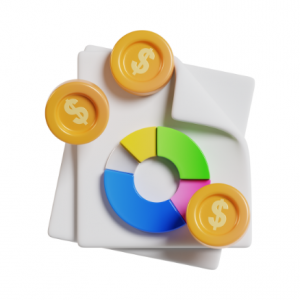Home » Google Ads: A Comprehensive Guide to Achieving Maximum ROI
In the digital realm, where the competition for consumer attention is fierce, Google Ads stands out as a powerful tool for businesses looking to increase online visibility and drive conversions. However, in order to fully realise its potential and achieve a positive return on ad spend (ROAS), best practices must be followed. In this comprehensive guide, we’ll look at the best Google Ads strategies, supplemented with real-world examples from Google Ads accounts, to help you maximise the effectiveness of your advertising efforts.
Thorough Keyword Research
Assume you run a boutique fitness studio in New York City. Conducting keyword research reveals that terms such as “NYC fitness classes,” or “personal training NYC” have high search volumes. By including these keywords in your ad campaigns, you can target users who are actively looking for fitness services in your area, increasing relevancy and the likelihood of conversion.
Organize Your Google Ads Account
Effective account organisation is the cornerstone of successful Google Ads campaigns. By organising your account into logical campaigns, ad groups, and keywords, you can improve management, performance, and relevancy. For example, suppose you run a travel agency that provides tours to various destinations. Organising your campaigns by destination (e.g., Europe Tours, Asia Tours) enables targeted messaging, budget allocation, and performance tracking for each geographic area.
Create Relevant Ad Copy
Assume you’re running an ad campaign to promote a special offer on personal training sessions. Crafting ad copy that highlights the unique benefits of your services, such as personalised workouts, certified trainers, and flexible scheduling, can help you attract new customers. By way of example, “Achieve Your Fitness Goals with Personalised Training – Book Your Session Today!”
Optimise Landing Pages
When users click your ad, they are taken to a dedicated landing page that highlights your studio’s services and the promotional offer. The landing page includes eye-catching visuals, client testimonials, and a clear call-to-action (CTA) that encourages visitors to schedule a free consultation. By aligning the landing page experience with the ad messaging, you can create a more seamless journey for users, increasing engagement and conversion rates.

Analyze the Competition
Understanding your competitors’ strategies and performance can help you optimise your own Google Ads campaigns. Conduct a competitive analysis to identify the strengths, weaknesses, and opportunities in your niche. For example, suppose you own a boutique coffee shop that competes with several nearby cafes. Analysing competitors’ ads, keywords, and landing pages can reveal unique selling points, pricing strategies, and promotional offers that will help your business stand out and attract customers.
Set Clear Goals and KPIs
Your goal is to increase membership sign-ups by 20% over the next quarter. By defining this specific goal and tracking key performance indicators (KPIs) such as conversion rate, cost per acquisition (CPA), and return on ad spend (ROAS), you can assess the effectiveness of your Google Ads campaigns in driving tangible business results.
Implement Ad Extensions
Assume you decide to include sitelink extensions in your ads, allowing users to access additional pages on your website, such as class schedules, trainer bios, and membership information. Sitelink extensions can improve ad visibility, CTR, and overall campaign performance by providing more information and opportunities for engagement to users.
Ad Schedule Optimization
Optimise your ad schedule by analysing campaign data to identify peak times for website visits and inquiries, such as weekday evenings and weekend mornings. Using ad scheduling, you can adjust your bids and budget accordingly, ensuring maximum exposure during high-converting periods while reducing spend during less active times.
Continuous Monitoring and Optimization
Regularly review performance metrics and run A/B tests to identify areas for improvement. For example, experimenting with different ad creatives, targeting options, and bidding strategies can provide valuable insights into what resonates with your audience and generates the highest ROAS.
Test Location Targeting
Location targeting enables you to reach users based on their geographic location, allowing for more precise audience segmentation and personalised messaging. Experiment with various location targeting options to identify high-performing areas and tailor ad delivery accordingly. For example, if you run a local plumbing business, testing location targeting by zip code or radius can help you determine the efficacy of targeting specific neighbourhoods or areas with high demand for your services.
Budget Allocation
Use performance data to allocate more budget to campaigns targeting high-intent keywords with proven conversion rates. Furthermore, experimenting with automated bidding strategies such as target ROAS enables you to optimise bids in real time to achieve the desired return on investment.

Use Remarketing Campaigns
If a user visits your website but does not complete the membership sign-up process. Remarketing campaigns allow you to re-engage these users by displaying tailored ads that promote your studio’s benefits while also offering a special incentive, such as a discounted trial class or a free consultation. Remarketing efforts can significantly increase conversion rates by keeping your brand in front of customers and reinforcing your value proposition.
Track Conversions
Use conversion tracking to accurately attribute conversions to specific ad campaigns and keywords. Understanding which touchpoints contribute the most to conversions allows you to optimise your budget allocation and bidding strategy, focusing resources on the channels and tactics that provide the best ROI.
Conclusion
Mastering Google Ads necessitates a strategic approach guided by data, creativity, and continuous optimisation. Implementing these best practices will help you maximise your return on ad spend and achieve long-term business growth in today’s competitive digital landscape. Remember that success in advertising is a continuous process of experimentation, analysis, and refinement. Keep learning, adapting, and innovating to stay ahead of the competition and achieve meaningful results with your Google Ads campaigns.



